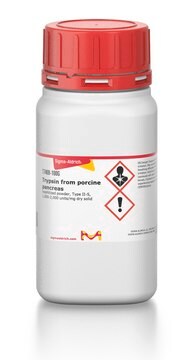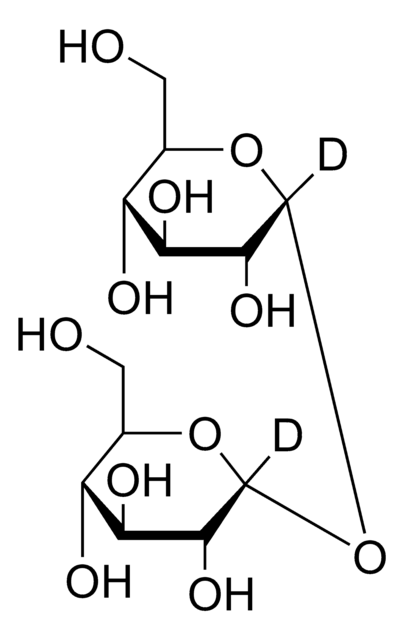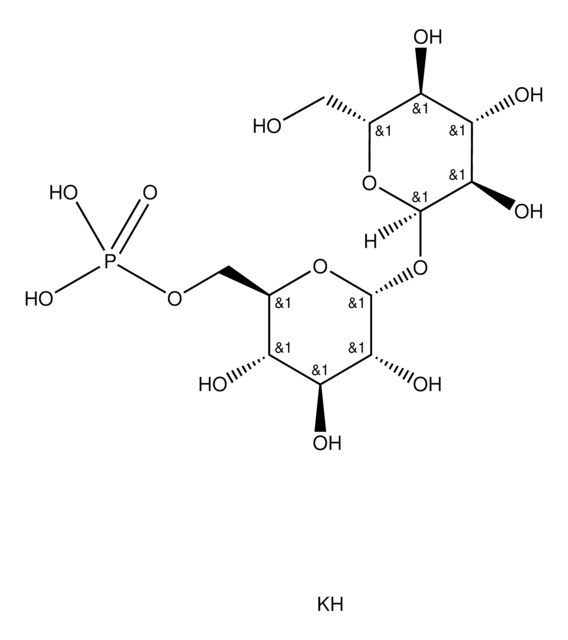T9449
D-(+)-Trehalose dihydrate
≥99% (HPLC), from starch
Synonym(s):
α,α-Trehalose, α-D-Glucopyranosyl-α-D-glucopyranoside
About This Item
Recommended Products
biological source
Manihot esculenta root (Cassava)
Quality Level
Assay
≥99% (HPLC)
form
powder
optical activity
[α]20/D 174 to 186 °, c = 1.0% (w/v) in water
technique(s)
HPLC: suitable
impurities
7.3-11.6% water (Karl Fischer)
color
white
mp
97-99 °C
solubility
water: 50 mg/mL, clear, colorless to very faintly yellow
storage temp.
room temp
SMILES string
[H]O[H].[H]O[H].OC[C@H]1O[C@H](O[C@H]2O[C@H](CO)[C@@H](O)[C@H](O)[C@H]2O)[C@H](O)[C@@H](O)[C@@H]1O
InChI
1S/C12H22O11.2H2O/c13-1-3-5(15)7(17)9(19)11(21-3)23-12-10(20)8(18)6(16)4(2-14)22-12;;/h3-20H,1-2H2;2*1H2/t3-,4-,5-,6-,7+,8+,9-,10-,11-,12-;;/m1../s1
InChI key
DPVHGFAJLZWDOC-PVXXTIHASA-N
Looking for similar products? Visit Product Comparison Guide
General description
Application
- in trehalose test to stabilize pharmaceutical products
- as a component of trehalose/sucrose solution for the preparation of J-aggregates
- in the preparation of simulated honey sugar cocktail (SHSC) to study its effect on chemical and thermal stability of proteins
Biochem/physiol Actions
Other Notes
Storage Class Code
11 - Combustible Solids
WGK
WGK 1
Flash Point(F)
Not applicable
Flash Point(C)
Not applicable
Personal Protective Equipment
Regulatory Listings
Regulatory Listings are mainly provided for chemical products. Only limited information can be provided here for non-chemical products. No entry means none of the components are listed. It is the user’s obligation to ensure the safe and legal use of the product.
JAN Code
T9449-VAR:
T9449-100G:
T9449-25G:
T9449-BULK:
T9449-500G:
Certificates of Analysis (COA)
Search for Certificates of Analysis (COA) by entering the products Lot/Batch Number. Lot and Batch Numbers can be found on a product’s label following the words ‘Lot’ or ‘Batch’.
Already Own This Product?
Find documentation for the products that you have recently purchased in the Document Library.
Customers Also Viewed
Our team of scientists has experience in all areas of research including Life Science, Material Science, Chemical Synthesis, Chromatography, Analytical and many others.
Contact Technical Service





